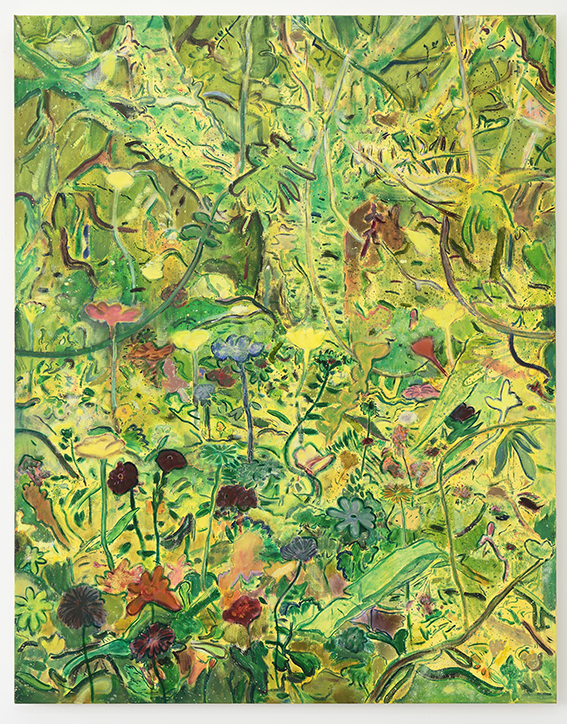Farm Garden
An amalgam of outsider, anachronistic, non-Western and wayward wayfarers are the reference points for Birchall’s visual exploration of autobiography, genre and if one can so put it, studio hijinks. The work can be read as both earnestly romantic, and clinically calculating – articulating the complexity of painting-making in an age of unsurpassed visual complexity and interconnectivity. Birchall’s work requires a significant conceptual and perceptual re-orientation on behalf of the viewer. Contained within a singular practice, Birchall conceives and crafts his paintings from a variety of position and perspectives – from the Romantic and Messianic figure of the artist as revealer of mystic truths, through to the use of a Duchampian-esque alter ego; or more correctly, nom de plume, which allows him certain liberties in the creation of work. Formally, Birchall’s works are defined by a rich layering of dry brushwork, which imbues his paintings with an illustrative and graphic sensibility. The texture of the canvas substrate is often in clear view in selected areas, complimented by layer upon layer of underpainting, washes and painterly line. Spatially Birchall’s paintings make use of compositional forms bridging edges of the picture plane, colour, and positive and negative space to create fantastical pictorial space. Another facet of Birchall’s practice is what can best be described as his discursive amble through the art history; particularly French, of early modernism – Courbet, Manet, the Nabis and Japanese woodblock printers of the Ukiyo-e are all sourced and cited, and linked with Burchfieldlike brushwork and depictions of landscape. – Tristian Keonig 2018
Seth Birchall
2019
Oil on linen

